Shout at the Devil (film)
6.6 /10 1 Votes
60% Rotten Tomatoes Initial DVD release July 19, 2003 Country United Kingdom | 6.2/10 IMDb 3/4 Roger Ebert Genre Action, Adventure, Drama Duration Language English | |||||||||||||||||||||||||||||||||
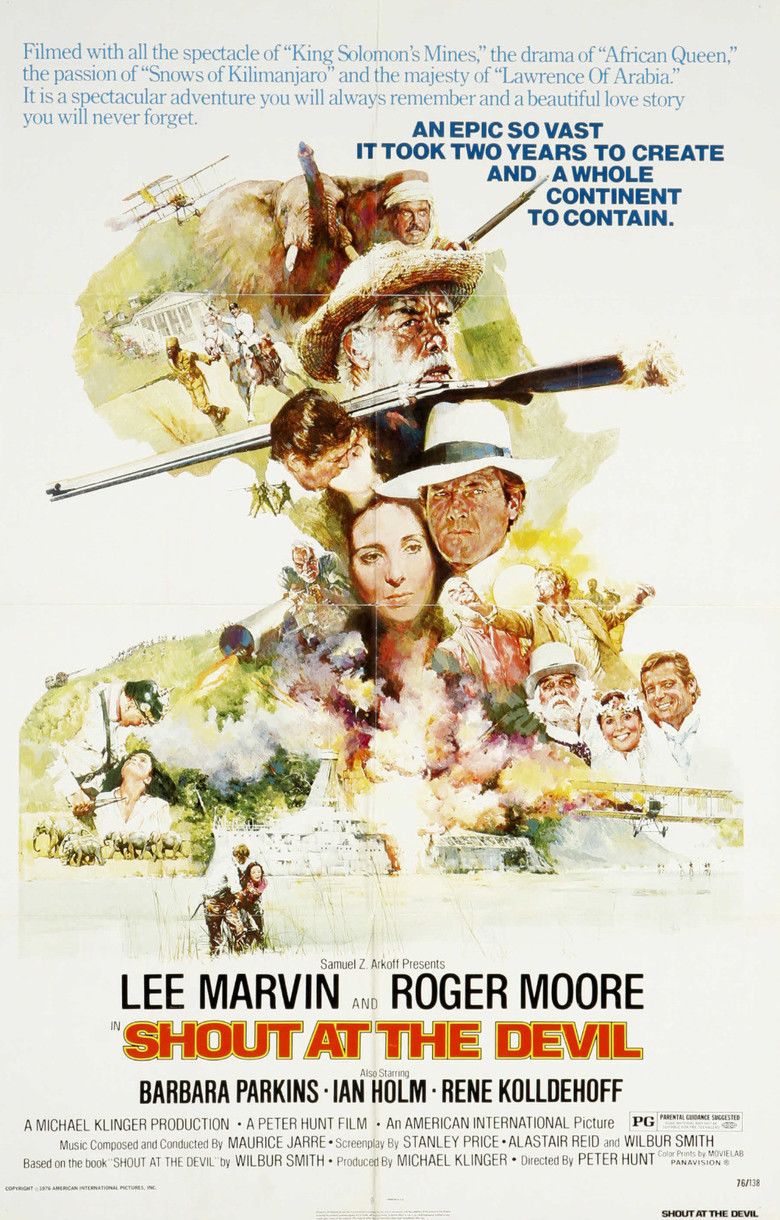 | ||||||||||||||||||||||||||||||||||
Release date 13 April 1976 (1976-04-13) (UK)24 November 1976 (1976-11-24) (US) Writer Stanley Price (screenplay), Alastair Reid (screenplay), Wilbur Smith (screenplay), Wilbur Smith (book) Screenplay Wilbur A. Smith, Alastair Reid, Stanley Price Cast (Colonel Flynn O'Flynn), (Sebastian Oldsmith), (Rosa O'Flynn / Oldsmith), (Mohammed), Reinhard Kolldehoff (Herman Fleischer), Gernot Endemann (Braun)Similar movies Roger Moore and Bernard Horsfall appear in Shout at the Devil and Gold Tagline A spectacular adventure you will always remember and a beautiful love story you will never forget. | ||||||||||||||||||||||||||||||||||
Shout at the devil peter hunt 1976 lee marvin roger moore
Shout at the Devil is a 1976 British war adventure film directed by Peter R. Hunt and starring Lee Marvin and Roger Moore. The film, set in Zanzibar and German East Africa in 1913–1915, is based on a novel by Wilbur Smith which is very loosely inspired by real events (see the sinking of the SMS Königsberg). The supporting cast features Barbara Parkins and Ian Holm.
Contents
- Shout at the devil peter hunt 1976 lee marvin roger moore
- Shout at the devil 1976 with roger moore barbara parkins lee marvin movie
- Plot summary
- Cast
- Original novel
- Historical accuracy
- Development
- Screenplay
- Filming
- Soundtrack
- Box office
- Critical
- Follow Ups
- References
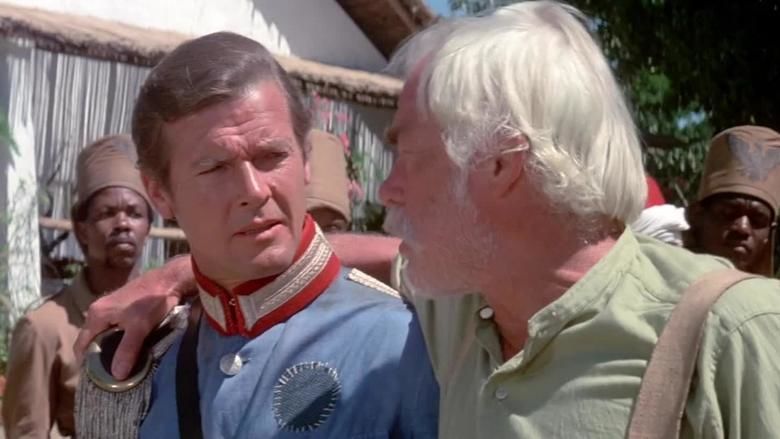
Shout at the devil 1976 with roger moore barbara parkins lee marvin movie
Plot summary
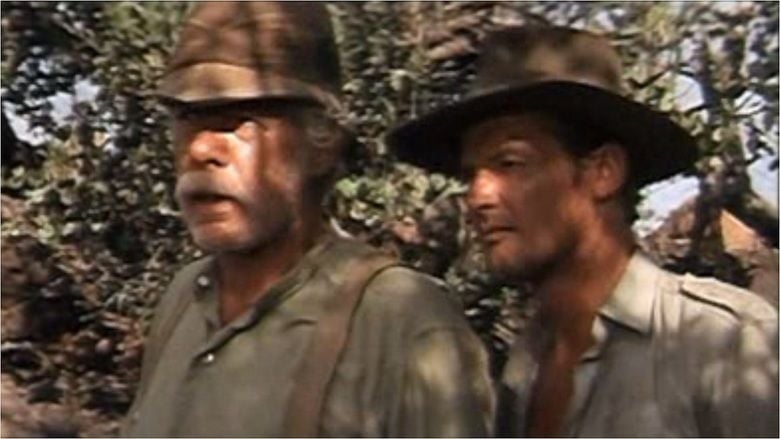
Colonel Flynn O'Flynn (Lee Marvin), a hard-drinking American, manipulates British aristocrat Sebastian Oldsmith (Roger Moore) into helping poach ivory in Tanganyika, which is part of the German-controlled pre-World War I territory of German East Africa. On hearing news that the American has returned, Herman Fleischer, the local German Commander of the Southern Provinces, relentlessly hunts O'Flynn with his Schutztruppen (colonial troops).
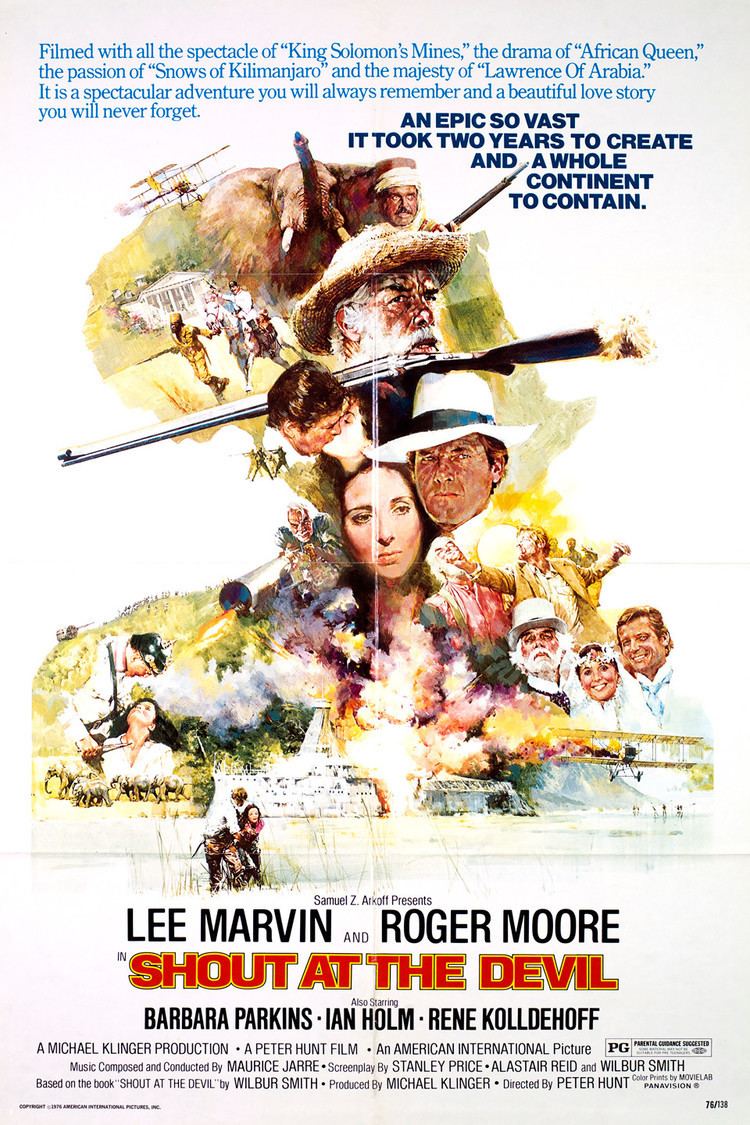
Later Sebastian meets and falls in love with O'Flynn's daughter, Rosa (Barbara Parkins). They are married and have a daughter together. Meanwhile the poaching continues. Fleischer has his warship ram and sink O'Flynn's Arab dhow (ship) loaded with poached ivory. Later, while attacking O'Flynn's home, Schutztruppe under Fleischer's command kill Sebastian's daughter Maria.
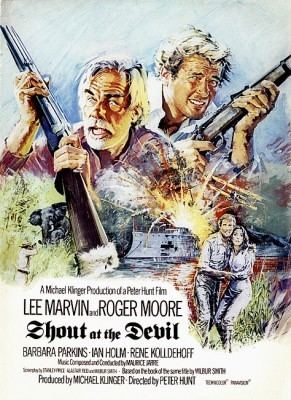
O'Flynn and Sebastian decide to go and kill Fleischer as revenge for the death of the little girl. But when it is discovered that Britain is at war with Germany, allied officers convince O'Flynn to locate and destroy the German warship awaiting repair.
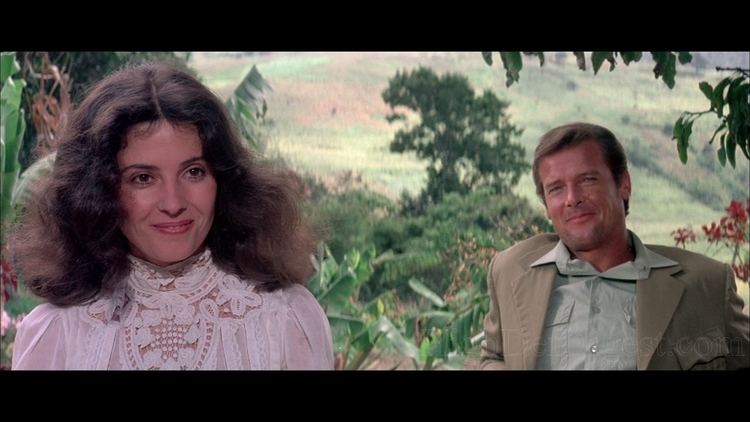
O'Flynn, Sebastian, and Rosa pursue Fleischer, who happens to be on the warship. Eventually they find her in an inlet and plant a bomb on board. O'Flynn sacrifices himself so that Sebastian and Rosa can escape while Fleischer's crew search for the bomb. Fleischer jumps overboard just in time to get away also, but as he comes ashore, Sebastian dispatches him with a rifle. Sebastian and Rosa then watch the ship as it is ripped apart by more explosions and burns.
Cast
Original novel
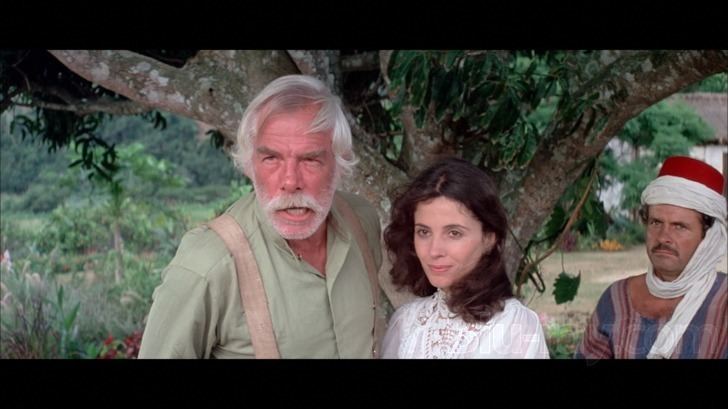
The script was based on a novel by Wilbur Smith. The critic from The New York Times called the book "a bloodbath".
Historical accuracy
The book which the film is based on is vaguely based on real events, and takes significant artistic licence with historical facts. The main story is loosely based on events concerning the light cruiser SMS Königsberg, which was sunk after taking refuge in Rufiji Delta in 1915. An ivory hunter 'Pretorious' had gone on board disguised as a native to pace out the ranges for the Navy's guns.
The German ship is renamed the Blücher, a vessel which did not serve in Africa. The film implies that Portugal became a co-belligerent with Britain against Germany when the First World War broke out in August 1914. In fact, Portugal remained neutral until 1916 (see Portugal in World War I). Portugal's status as an ally seems to be confirmed in the film when the Portuguese supply O'Flynn and Oldsmith with a marked Portuguese plane with a Portuguese pilot to conduct surveillance in German territory. In reality, the Portuguese would not have allowed this as it would have violated their neutrality.
Although the motives for killing Fleischer are personal, Sebastian Oldsmith is in fact the only major character who is a citizen of a nation actually at war with Germany.
Development
Film rights were bought by Michael Klinger, who would also buy the rights to Gold Mine, The Sun Bird, The Eye of the Tiger and Eagle in the Sky. It was announced in 1969 that the movie version would be made by Cinerama Inc but it took a number of years for the adaptation to be financed.
In 1971 Smith wrote to Klinger that, "It is now becoming critical that somebody start making films out of my books. This is essential for my career - which really needs a good film to take off in the Alistair Maclean class."
Klinger was highly enthusiastic about Shout at the Devil - his son referred to it as his father's equivalent of Gone with the Wind. The producer himself called it a combination between The African Queen and The Guns of Navarone. However it was an expensive film to produce. Klinger decided to first make a film of Smith's novel Gold Mine.
Screenplay
Smith worked on the script with Stanley Price, who also helped adapt Smith's novel Gold Mine for Michael Klinger. However, the film ending was changed; in the novel all three main characters die.
Filming
The film's budget has been reported as $9–10 million. Klinger said $3.5 million was provided by AIP.
The film was shot on location in Malta and - controversially due to the then apartheid regime - in South Africa. Shooting took 15 weeks and began in March 1975. The South African portion of the film was based out of the town of Port St Johns.
Stars Roger Moore and Lee Marvin got along well. "They were very funny and liked each other a great deal," said director Peter Hunt. "They would socialise and get drunk together in the evenings, although they never had thick heads in the morning."
"I love this gentleman," said Moore about Marvin. "Thanks to him I have given my best performance ever. I can only be as good as the other guy. Working with Lee Marvin hauls you up, forces you to try to reach his level."
The movie was cut during post production with around 50 minutes cut out.
Soundtrack
The music was composed by Maurice Jarre
Box office
The film was one of the most successful British films of 1976 grossing £15 million.
Critical
Critic Richard Eder did not like the film much. He wrote, "The movie has too much plot. All that action, conducted by characters without character—except for Fleischer, whose childlike joy in hurting people is almost appealing—produces lethargy...the movie is a passable midget in absurdly long pants."
Film critic Roger Ebert thought that "Shout at the Devil is a big, dumb, silly movie that's impossible to dislike. It's so cheerfully corny, so willing to involve its heroes in every possible predicament, that after a while we relax: This is the kind of movie they used to make, back when audiences were supposed to have the mentality of a 12-year-old. It's great to be 12 again."
Follow Ups
Klinger had the film rights to other Smith novels, The Sunbird, Eagle in the Sky and The Eye of the Tiger. Eagle and Eye of the Tiger were meant to be part of a four picture deal between Klinger and Rank Productions. However none were ever made. The relationship between Smith and Klinger, once warm, ultimately ended in litigation.
References
Shout at the Devil (film) WikipediaShout at the Devil (film) IMDbShout at the Devil (film) Rotten TomatoesShout at the Devil (film) Roger EbertShout at the Devil (film) themoviedb.org
